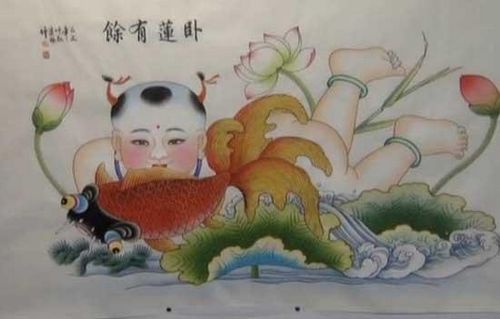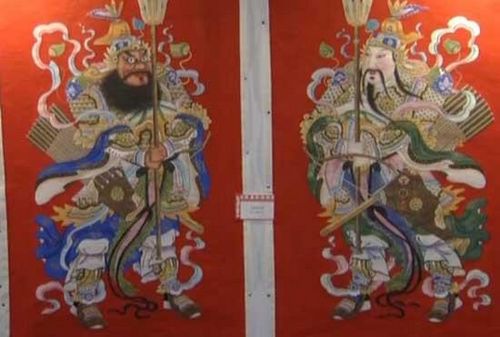
The 120 New Year paintings on display are chosen from some 4,000 in the National Library's collection. Some of them are more than 100 years old, but their colors are still vibrant, drawing viewers into the era they depict.

The 120 New Year paintings on display are chosen from some 4,000 in the National Library's collection. Some of them are more than 100 years old, but their colors are still vibrant, drawing viewers into the era they depict.
New Year paintings were once a must to decorate Chinese homes during Spring Festival. But the practice is vanishing as modern lifestyles catch on. Gone is the custom but not yet the art, as the National Library in Beijing opens an exhibition of these traditional paintings.
The 120 New Year paintings on display are chosen from some 4,000 in the National Library's collection. Some of them are more than 100 years old, but their colors are still vibrant, drawing viewers into the era they depict.
In the past, both the wealthy and poor Chinese would paste New Year paintings on their doors or walls, to ward off evil or invite in blessings.
Wang Haixia, director of Folk Art Department of China Art Research Institute, said, These are of the Door Gods, wielding big knives so spirits cannot pass through. They are pasted on the outside of doors to homes. Inside the homes, people would paste images of these more approachable Door Gods, to let in fortune and luck.
Apart from symbols warding off evil or praying for fortune, scenes of legends, customs, operas and daily life are also themes of New Year paintings. In the Qing dynasty, many places earned fame for their large productions of the paintings, such as Yangliuqing in Tianjin, and Henan town Zhu Xian.
Wang said, "In Yangliuqing's heydays, there were more than a thousand workshops producing New Year paintings. Nearby villages also rose up because of this trade. So before each Spring Festival, many merchants would come to Yangliuqing."
But more than a century on, popularity of New Year paintings have waned. And the craft itself is in danger of dying out.
At the exhibition, representatives from six hailed cradles of the craft, which receive government support to guard the heritage, are demonstrating their skills.
This man from Shandong Province is printing a New Year painting from a block. While this old Tianjin master is showing his hand-painted pieces. He tells us nowadays, rather than being household necessities, New Year paintings have become much loved collectibles of some.
Raising their value may be a way for the endangered artform to live on.

Copyright ©1999-2011 Chinanews.com. All rights reserved.
Reproduction in whole or in part without permission is prohibited.